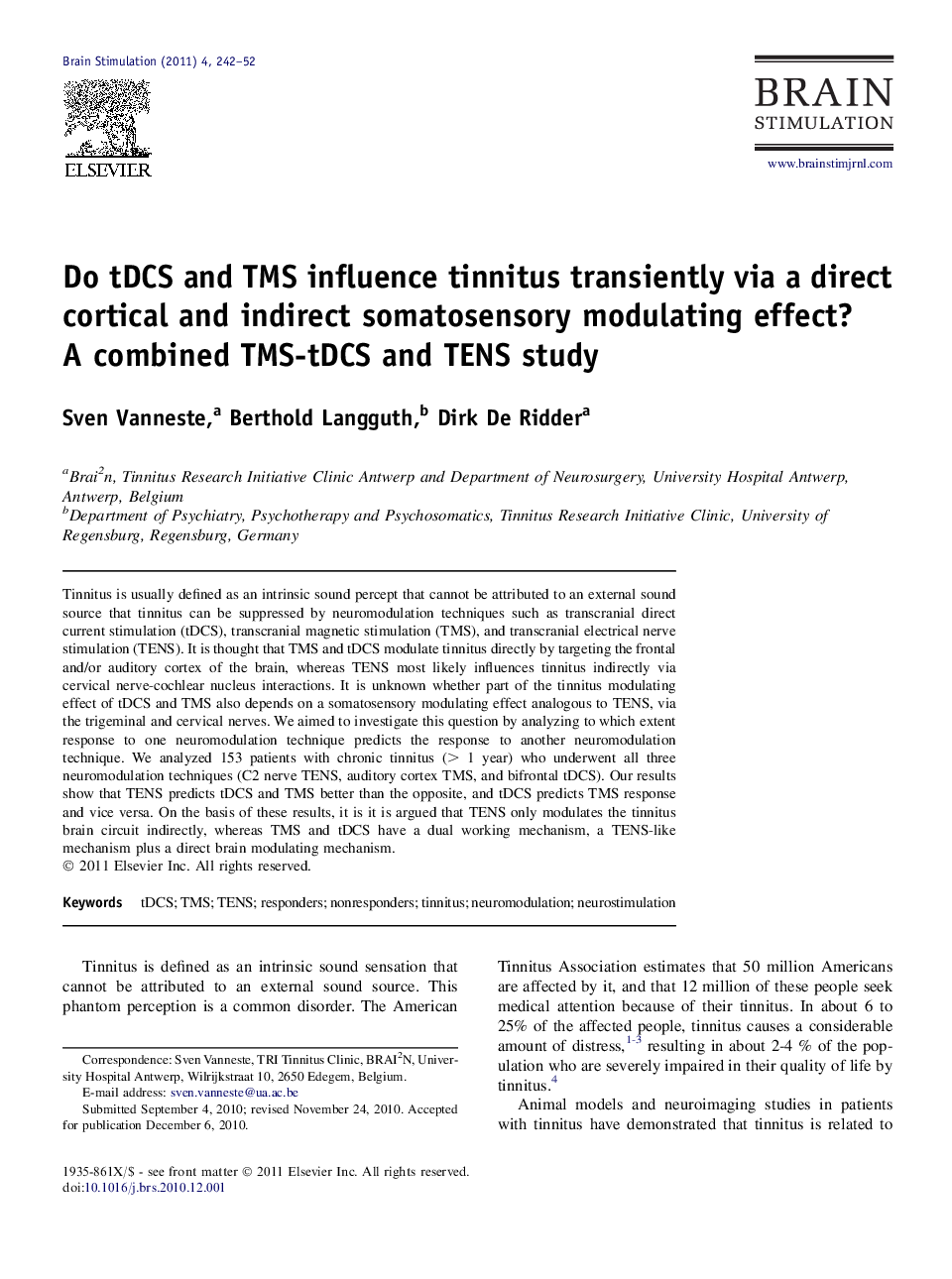| Article ID | Journal | Published Year | Pages | File Type |
|---|---|---|---|---|
| 3038851 | Brain Stimulation | 2011 | 11 Pages |
Tinnitus is usually defined as an intrinsic sound percept that cannot be attributed to an external sound source that tinnitus can be suppressed by neuromodulation techniques such as transcranial direct current stimulation (tDCS), transcranial magnetic stimulation (TMS), and transcranial electrical nerve stimulation (TENS). It is thought that TMS and tDCS modulate tinnitus directly by targeting the frontal and/or auditory cortex of the brain, whereas TENS most likely influences tinnitus indirectly via cervical nerve-cochlear nucleus interactions. It is unknown whether part of the tinnitus modulating effect of tDCS and TMS also depends on a somatosensory modulating effect analogous to TENS, via the trigeminal and cervical nerves. We aimed to investigate this question by analyzing to which extent response to one neuromodulation technique predicts the response to another neuromodulation technique. We analyzed 153 patients with chronic tinnitus (> 1 year) who underwent all three neuromodulation techniques (C2 nerve TENS, auditory cortex TMS, and bifrontal tDCS). Our results show that TENS predicts tDCS and TMS better than the opposite, and tDCS predicts TMS response and vice versa. On the basis of these results, it is it is argued that TENS only modulates the tinnitus brain circuit indirectly, whereas TMS and tDCS have a dual working mechanism, a TENS-like mechanism plus a direct brain modulating mechanism.
